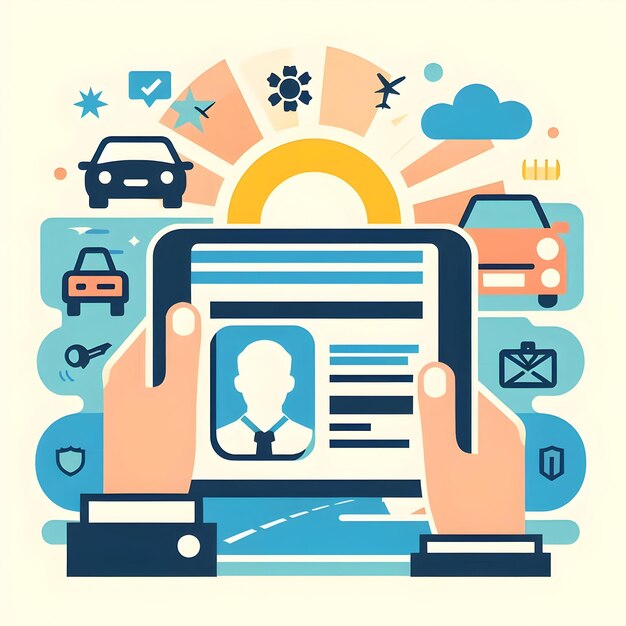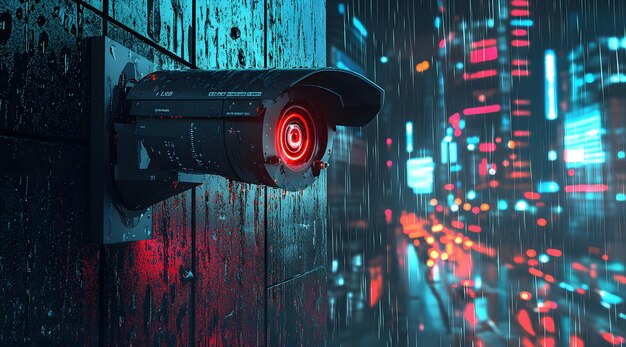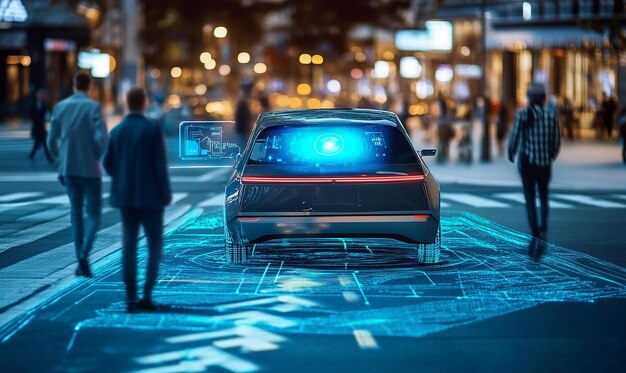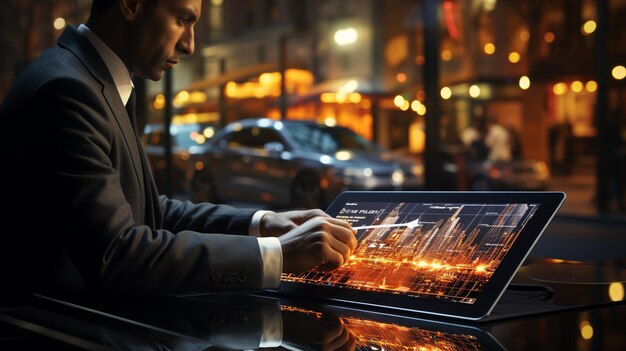Beyond Cars: The Expanding Scope of License Plate Reader Data
License plate reader (LPR) technology, initially designed for law enforcement to identify and track vehicles of interest, has expanded its
reach
and
applications
in various sectors. This not only includes traffic management and parking enforcement but also extends to security, marketing, and even
revenue generation
.
LPR systems, which use cameras to scan, read, and store license plate numbers, are now becoming a crucial
infrastructure
in modern cities. With the vast amounts of data generated from these systems, it’s no surprise that there’s a growing interest in harnessing this data for other purposes.
Traffic Management and Parking Enforcement
The most common use of LPR data is for traffic management and parking enforcement. Cities can use this information to monitor traffic flow, identify patterns, and optimize parking availability.
Security
In the realm of security, LPR data can be used to monitor access control in gated communities and secure facilities. Additionally, it can help law enforcement identify vehicles associated with criminal activity, such as stolen cars or those belonging to suspects.
Marketing and Advertising
Businesses can also leverage LPR data for marketing purposes. For instance, retailers can use the data to send targeted promotions and offers to customers based on their location or purchasing history.
Gas stations
, restaurants, and shopping malls can use this data to analyze foot traffic and tailor their marketing strategies accordingly.
Revenue Generation
Moreover, LPR data can be a valuable source of revenue for governments and private organizations. Parking authorities can issue fines based on overstayed parking or incorrectly parked vehicles. Additionally, some companies sell the data to third-party marketers and advertisers for targeted advertising campaigns.

License Plate Readers: Revolutionizing Law Enforcement and Traffic Management
License plate readers (LPRs), also known as Automated License Plate Recognition systems, are cutting-edge technologies designed to automatically identify vehicles by reading their license plates. The primary function of these devices is to provide law enforcement agencies and traffic management systems with vital information about a vehicle’s whereabouts and ownership.
How Do LPRs Work?
LPR technology uses high-resolution cameras to capture images of license plates, and advanced Optical Character Recognition (OCR) algorithms to extract the plate number accurately. These systems can read plates in various conditions, including low light or poor image quality. The data captured is then cross-referenced against databases of stolen vehicles, wanted fugitives, and other law enforcement records to identify potential threats or violations.
Importance of LPR Technology
The importance of LPR technology in law enforcement and traffic management is significant. In the realm of law enforcement, these systems have proven to be an effective tool for locating stolen vehicles, identifying suspects involved in criminal activities, and streamlining investigations. On the other hand, in traffic management, LPRs are used to monitor and manage traffic flow, enforce parking regulations, and improve public safety.
Expanding Usage and Data Collection
With the increasing popularity of LPR technology, its usage has extended beyond traditional applications. Many private organizations have started using these systems for security purposes, such as access control to gated communities or monitoring parking lots. Furthermore, the vast amounts of data collected by LPRs have become a valuable resource for marketing and analytics firms, enabling them to analyze traffic patterns, customer behavior, and trends.

History and Development of License Plate Reader Technology
Early beginnings and initial implementation
The history of License Plate Reader (LPR) technology dates back to the late 1990s when the first systems were developed. These initial LPR systems used simple cameras and optical character recognition (OCR) algorithms to read license plates. Police departments in California were among the first to adopt this technology for law enforcement purposes, using it to check plates against stolen vehicle databases. These early LPR systems were bulky, expensive, and not very reliable. However, they laid the foundation for the development of more advanced and sophisticated LPR technology.
Evolution over the years: advances in technology, integration with law enforcement databases, and expansion of use cases
Real-time crime centers and stolen vehicle recovery
As LPR technology advanced, law enforcement agencies began to integrate it into their real-time crime centers. These centers allowed officers to quickly identify and respond to crimes as they were happening. LPR technology was particularly useful for stolen vehicle recovery, enabling police to locate and recover stolen vehicles more efficiently than ever before.
Red-light camera systems and automated toll collection
Another major development in LPR technology was its integration with red-light cameras and automated toll collection systems. These systems used LPR to detect when vehicles violated traffic laws or failed to pay tolls. This led to increased revenue for governments and improved road safety.
Advances in technology
Over the years, LPR technology has continued to evolve. Modern systems use high-speed cameras and sophisticated OCR algorithms to read plates more accurately and quickly. Some LPR systems even use multiple cameras to ensure a clear view of the plate, regardless of its angle or position on the vehicle.
Integration with law enforcement databases
LPR technology has also become more integrated with law enforcement databases, enabling officers to check plates in real-time against criminal records, wanted lists, and other databases. This has led to increased public safety by allowing officers to quickly identify suspects and criminals.
5. Expansion of use cases
LPR technology has also expanded beyond law enforcement and traffic enforcement applications. Some private companies use LPR to track the movements of commercial vehicles, monitor parking lots, and even target marketing campaigns based on vehicle location and demographics.
Current state of LPR technology: capabilities, limitations, and trends
Today, LPR technology is a powerful tool for law enforcement, traffic management, and commercial applications. However, it also raises concerns about privacy and civil liberties. While LPR systems can help prevent crime and improve safety, they can also be used to track the movements of individuals without their consent. As LPR technology continues to evolve, it will be important for governments and businesses to address these concerns and ensure that its use is transparent, accountable, and respectful of individual privacy rights.
Capabilities
Modern LPR systems can read plates at speeds up to 250 miles per hour and have a recognition rate of over 99%. They can also read plates from multiple angles and distances, making them versatile tools for various applications.
Limitations
Despite its capabilities, LPR technology has limitations. It may not be able to read plates that are obscured by dirt, damage, or other obstructions. It also relies on accurate and up-to-date databases to be effective.
Trends
Some of the trends in LPR technology include the use of artificial intelligence and machine learning to improve plate recognition accuracy, integration with other data sources such as GPS and social media, and the development of mobile LPR systems that can be used in various settings.

I Expanding Scope of License Plate Reader Data
Collection and storage of LPR data
Types of data:
License Plate Reader (LPR) systems collect and store a significant amount of data, including time, location, vehicle make, model, color, and license plate number. This data is essential for law enforcement agencies to identify vehicles of interest and investigate crimes.
Use of LPR data in investigations and analytics
Suspected criminals and persons of interest:
LPR data can be used to identify vehicles associated with suspected criminals or persons of interest, enabling law enforcement to focus their investigations more effectively.
Traffic analysis and infrastructure planning:
LPR data can also be employed for traffic analysis and infrastructure planning, assisting in the identification of congested areas, optimizing traffic flow, and enhancing public safety.
Data sharing and collaboration between law enforcement agencies, government organizations, and private entities:
Collaboration:
Law enforcement agencies often share LPR data with one another, as well as with government organizations and private entities, to enhance their ability to identify and apprehend criminals.
Potential privacy concerns and ethical considerations:
Balancing public safety and individual rights:
The use of LPR data raises significant privacy concerns, as it involves the collection, storage, and potential sharing of personal information. It is crucial to balance these concerns with the need for public safety.
Legal frameworks and regulatory oversight:
Various legal frameworks and regulatory oversight mechanisms exist to address these concerns. Lawmakers, policymakers, and law enforcement agencies must work together to ensure that LPR data is collected, stored, and used ethically and transparently.

Case Studies and Real-World Applications of Beyond-Car Uses of LPR Data
Case Studies and Real-World Applications of Beyond-Car Uses of LPR Data
Crime prevention and investigation:
Beyond-car uses of License Plate Recognition (LPR) data have proven to be invaluable in crime prevention and investigation.
For instance,
in a link case, LPR data was used to identify a rental car that was stolen and later involved in a hit-and-run accident. The vehicle information obtained from the LPR system led law enforcement to locate the suspect, who was subsequently arrested and charged with numerous crimes.
Another example is
from a link case, where LPR data was instrumental in apprehending a suspect who was wanted for a series of thefts. The data provided the police with critical information about the suspect’s vehicle, which led them to his location and eventual arrest.
Infrastructure management and traffic analysis:
The vast amount of data generated by LPR systems can be analyzed to gain valuable insights into infrastructure management and traffic flow.
For example,
in a link study, LPR data was used to analyze traffic patterns and travel times. The insights gained from this analysis were used to inform infrastructure improvements and traffic management strategies, leading to improved efficiency and reduced congestion.
Similarly,
in a link city, LPR data was used to monitor vehicle emissions and identify violators, leading to increased enforcement efforts and improved air quality.
Public-private partnerships:
Collaboration between law enforcement agencies and private entities is a growing trend in enhancing security and safety using LPR data.
One example
is a link in link, where the state highway authority partnered with a private company to install LPR cameras along highways. The partnership allowed the private company to access the data for marketing purposes while providing law enforcement with critical information to enhance public safety.
